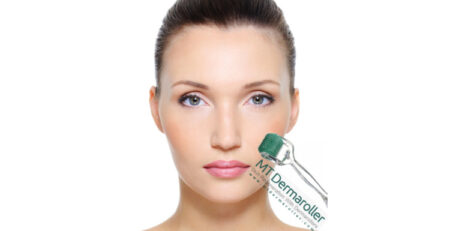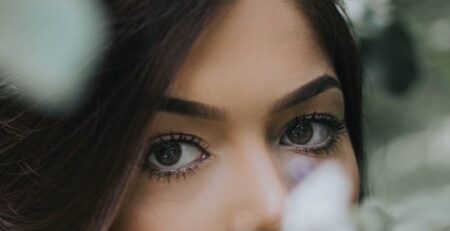How Dermarolling Therapy Can Stimulate Hair Growth?
Losing one’s hair is probably one of the most distressing events that could happen in one’s life. Some may even get anxiety attacks just by the thought of losing their precious hair. Your hair is your crowning glory, aside from the fact that it is one of the few first things that people look into when they see you.
But what if one day, you observe that the topmost part of your head is slowly losing its hairs? Or probably there are some areas in your scalp where the hair has stop growing? And even if you try to hide it by doing some hair styles, the baldness is still getting worst. And at the end of the day, you are troubled by the thoughts that you may end up losing all of your hairs later on.
If you have a similar problem, don’t panic. There’s something that you can do to delay the progression of baldness. You may not entirely stop hair loss because it is a common occurrence as one grows older, and it is one of the signs of aging. And probably, it also a hereditary condition wherein most of your family members like aunts, uncles, mother and or father have also a similar condition.
Hair loss or alopecia is an autoimmune disorder which is characterized by patches or localized hair loss in the scalp, eyelashes, eyebrows and so on. It may be associated with other autoimmune diseases such as thyroid disease and vitiligo. Hair loss may spontaneously resolve but it can have worse prognosis if it occurs at a younger age where there is an extensive involvement of hair loss. Emotional stress can also precipitate the recurrence of hair loss.
Whatever the reason is, there are treatment options available to prevent hair loss. And one of the newer treatment modality used in treating hair loss is dermarolling therapy. In fact, there are many studies being done to prove the efficacy of dermarolling therapy. A lot of current studies showed the promising potential of microneedling or dermarolling treatment in treating alopecia or hair loss.
Is Dermarolling Really Effective in Treating Hair Loss?
Newer studies have been exploring the role of dermarolling therapy in treating hair loss. The dermarolling therapy works by targeting the dermal papilla which is the site of expression of hair related genes. [1] There are various researches that explore the role of proteins and growth factors in stimulating the associated stem cells that are located on the dermal papilla.
Studies have shown that dermarolling therapy along with Minoxidil treatment has statistically superior result as compared with groups that were given Minoxidil treatment only.1 It also shows that the combined dermarolling with Minoxidil treatment promotes better and healthier hair growth among men. Thus, they concluded that dermarolling treatment is promising and safe tool in hair stimulation.
It is also a very good treatment option for people who failed to response to Minoxidil treatment alone. It is recommended that for visible results, dermarolling therapy should be performed together with Minoxidil treatment.
Minoxidil is a drug classified as potassium channel blocker which is used for hair stimulation. It induces hair growth by vasodilation of the blood vessels in the scalp. Minoxidil and Finasteride is the two FDA approved drug for treating Androgenetic Alopecia or AGA.1
So what is the mechanism of dermarolling therapy in treating hair loss?
Microneedling or dermarolling therapy stimulates hair re-growth through the following mechanism:
- Dermarolling helps in releasing epidermal growth factors and platelet derived factors through skin wound regeneration and platelet activation mechanism.
- It helps activate stem cells in the hair bulge area where the wound healing condition occurs as induced by the dermarolling treatment.
- It stimulated over expression of Beta cetenin, Wnt 3a, Wnt 10 b and hair growth related genes and vascular endothelial growth factors.
These molecular mechanisms are triggered through the activation of the skin receptors as initiated by the rolling mechanisms during the therapy. Studies have confirmed that repeated stimulation showed enhanced expression of the hair related genes.1 This was proven in an animal study which was later on confirmed through human studies.
It is also noted that hair re-growth through microneedling resulted to a faster and earlier hair growth. It was observed that the hairs are shinier in texture than the untreated group. Thus, a lot of researchers recommends the use of dermarolling therapy to treat hair loss particularly those who have failed treatment results in Minoxidil-alone therapy.
Is Dermarolling Therapy Superior to Conventional Treatment for Hair Loss?
There are a lot of emerging studies which compares dermarolling therapy to conventional treatment. Researchers want to figure out if dermarolling therapy is superior and comparable with the traditional method of treating hair loss. There are other studies also that are looking into dermarolling therapy as an alternative option in case conventional treatment fails. While other studies focus on the role of dermarolling therapy in augmenting the treatment of conventional therapy.
A study reported the role of dermarolling therapy in augmenting the response to conventional hair loss treatment such as Minoxidil and Finasteride.[2] The dermarolling treatment has proven its accelerated response leading to a significant scalp density. Indeed microneedling therapy has a boosting effect on hair follicle stimulation for patients suffering from androgenetic alopecia. This is particularly true for those who are poor responders to conventional therapy. 2
Dermarolling Therapy as an Effective Alternative Option
People who have failed medical management for their hair loss can try dermarolling therapy to prevent progressive hair loss. Studies have proven that dermarolling therapy is effective in stimulating hair re-growth. It also proved that the hairs have better texture, shinier and healthier compared with the hair re-growth induced by conventional method.
Bibliography
[1]Rachita Dhurat, MS Sukesh, Ganesh Avhad, Ameet Dandale, Anjali Pal, and Poonam Pund. (2013). A Randomized Evaluator Blinded Study of Effect of Microneedling in Androgenetic Alopecia: A Pilot Study. Int J Trichology. , 6–11.
[2] Dhurat R1, Mathapati S1. (2015). Response to Microneedling Treatment in Men with Androgenetic Alopecia Who Failed to Respond to Conventional Therapy. Indian J Dermatol.













